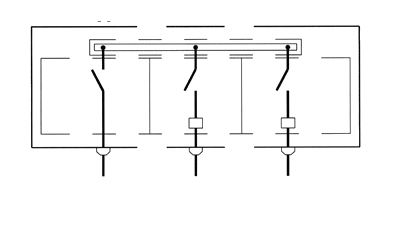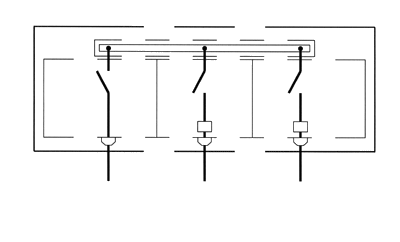

Service Division
With our fully qualified and industry experienced team NCE Service are the first choice partners for all aspects of increasing the longevity of switchgear in an increasingly health and safety focused environment



Sectors
NCE are an electrical switchgear manufacturers that offer the complete electrical solution whether it be motor control, instrumentation or distribution.

Form 4
How does it work?
Separation of busbars from the functional units, and separation of all functional units from one another, including the terminals for external conductors which are an integral part of the functional unit.
Terminals for external conductors located in the same compartment as the associated functional unit. Busbar separation is achieved by insulated coverings, eg. Sleeving, wrapping or coatings. Cables may be glanded elsewhere.
Type 1
Terminals for external conductors located in the same compartment as the associated functional unit. Busbar separation is achieved by metallic, or non-metallic, rigid barriers, or partitions. Cables may be glanded elsewhere
Type 2
Terminals for external conductors located in the same compartment as the associated functional unit. Busbar separation is achieved by insulated coverings, eg. Sleeving, wrapping, or coatings. The termination for each functional unit has its own integral glanding facility.
Type 3
Terminals for external conductors located in the same compartment as the associated functional unit, but in individual, separate, enclosed protected spaces, or compartments. Busbar separation is achieved by insulated coverings, eg. Sleeving, wrapping or coatings. Cables may be glanded elsewhere.
Type 4
Terminals for external conductors located in the same compartment as the associated functional unit, but in individual, separate, enclosed protected spaces, or compartments. Busbar separation is achieved by metallic, or non-metallic, rigid barriers, or partitions. Terminals may be separated by insulated coverings, and glanded in common cabling chambers.
Type 5
Terminals for external conductors located in the same compartment as the associated functional unit, but in individual, separate, enclosed protected spaces, or compartments. All separation is by metallic or non-metallic, rigid barriers, or partitions. Cables are glanded in common cabling chamber.
Type 6
Terminals for external conductors located in the same compartment as the associated functional unit, but in individual separate, enclosed protected spaces, or compartments. All separation is by metallic, or non-metallic, rigid barriers, or partitions. The termination for each functional unit has its own integral glanding facility.
Type 7
Type 1 and 2
Incoming
Isolation
Device

Functional Units separated from each other, and busbars, cab;es glanded elsewhere. Terminals associated with Functional Units, to be located in the same compartment as the functional unit.
Type 1 - Separation by insulated coverings.
Type 2 - Separation by metallic, or non-metallic rigid barriers.
Functional
Units
Incoming
Isolation
Device
Functional Units separated from each other, and busbars, cables glanded on the Functional Unit compartment. Terminals associated with Functional Units to be located in the same compartment as the Functional Unit.
Separation by metallic, or non-metallic rigid barriers.

Functional
Units
Type 3
Incoming
Isolation
Device
Functional Units separated from each other, and busbars, cables glanded on common cabling together. Terminals associated with Functional Units, to be separated from those of other Functional Units, and located in separate compartments.
Type 4 - Busbar separation by insulated coverings.
Type 5 - Busbar separation by metallic, or non-metallic rigid barriers, Terminal separation by insulated coverings.
Type 6 - Busbar separation by metallic, or non-metallic rigid barriers. Terminal separation by metallic, or non-metallic, rigid barriers

Functional
Units
Type 4, 5 and 6

Enclosure
Terminals for external conductors
Busbars
Internal Barriers
Functional
Unit
Incoming
Isolation
Device

Type 7
Functional
Units
Incoming
Isolation
Device
Functional Units separated from each other, and busbars, cables glanded on Terminal Compartment, Terminals associated with Functional Units, to be separated from those of other Functional Units, and located in separate compartments.
Separation by metallic, or non-metallic rigid barriers.






